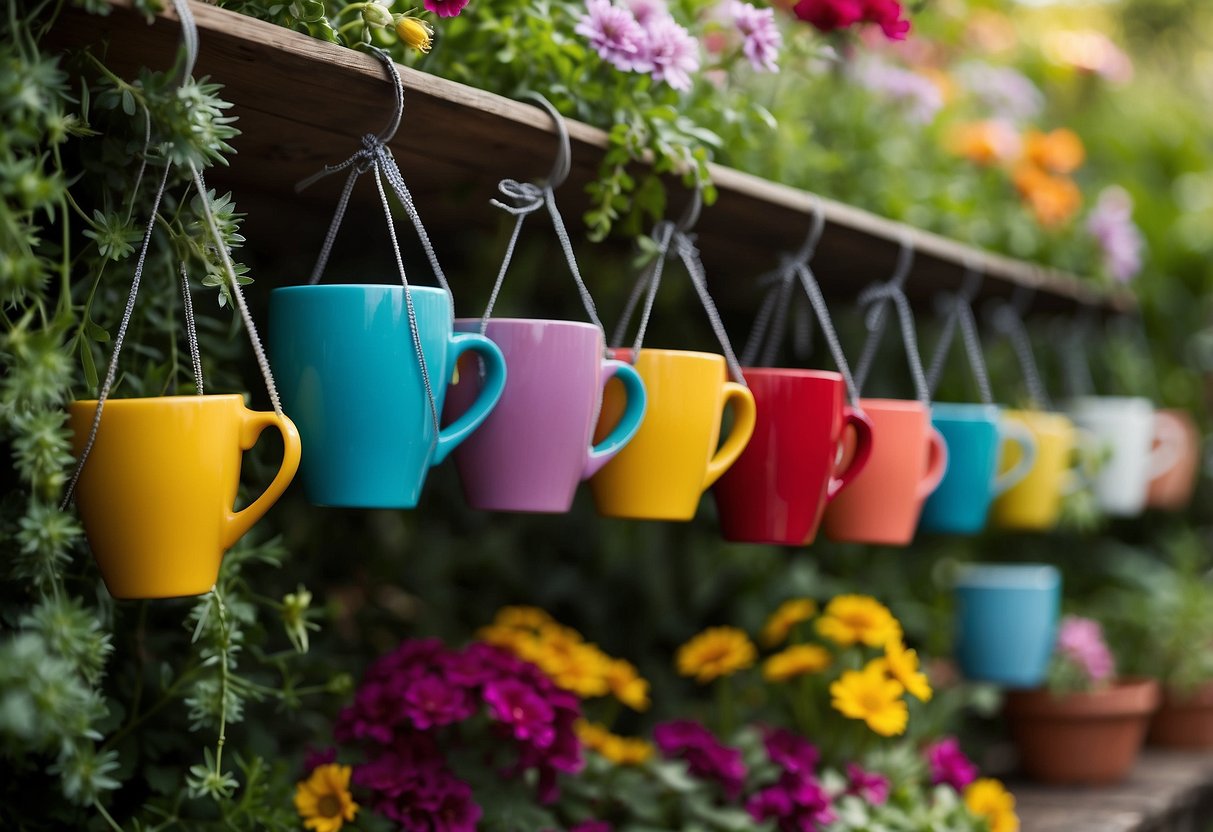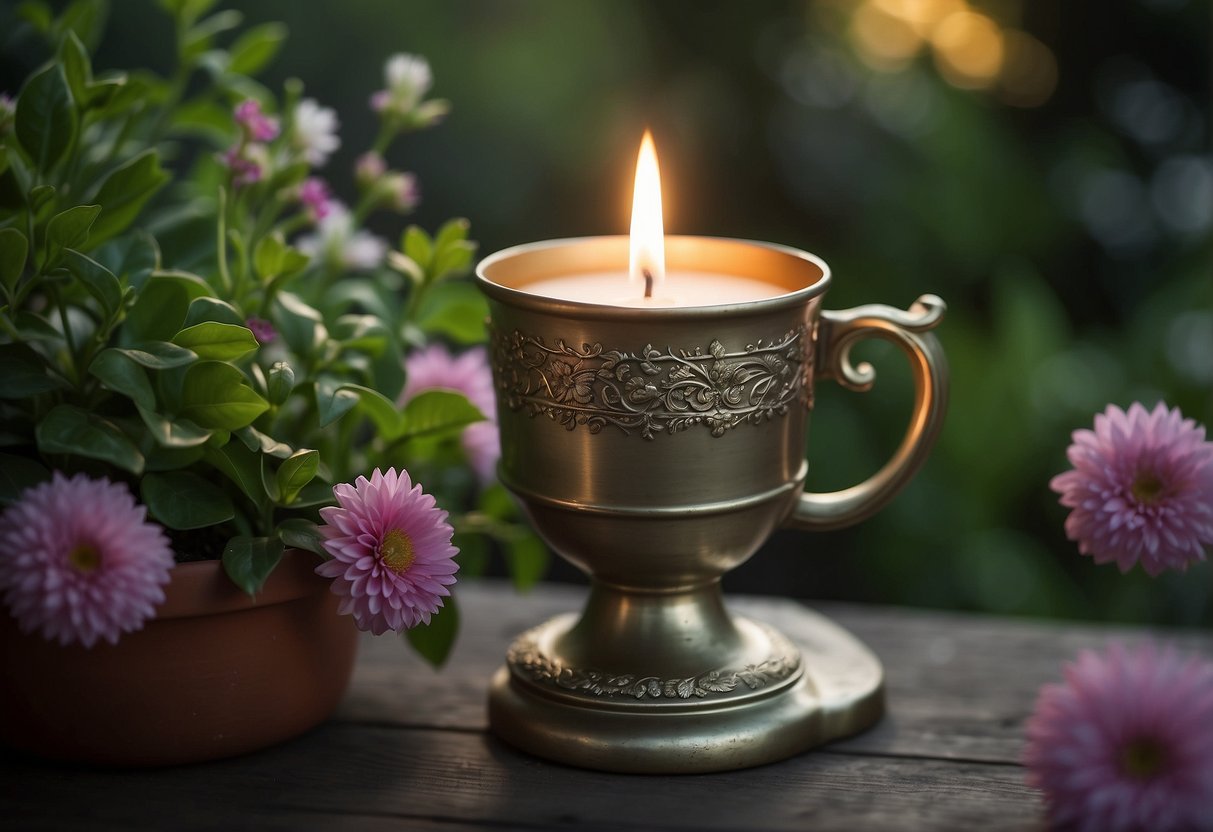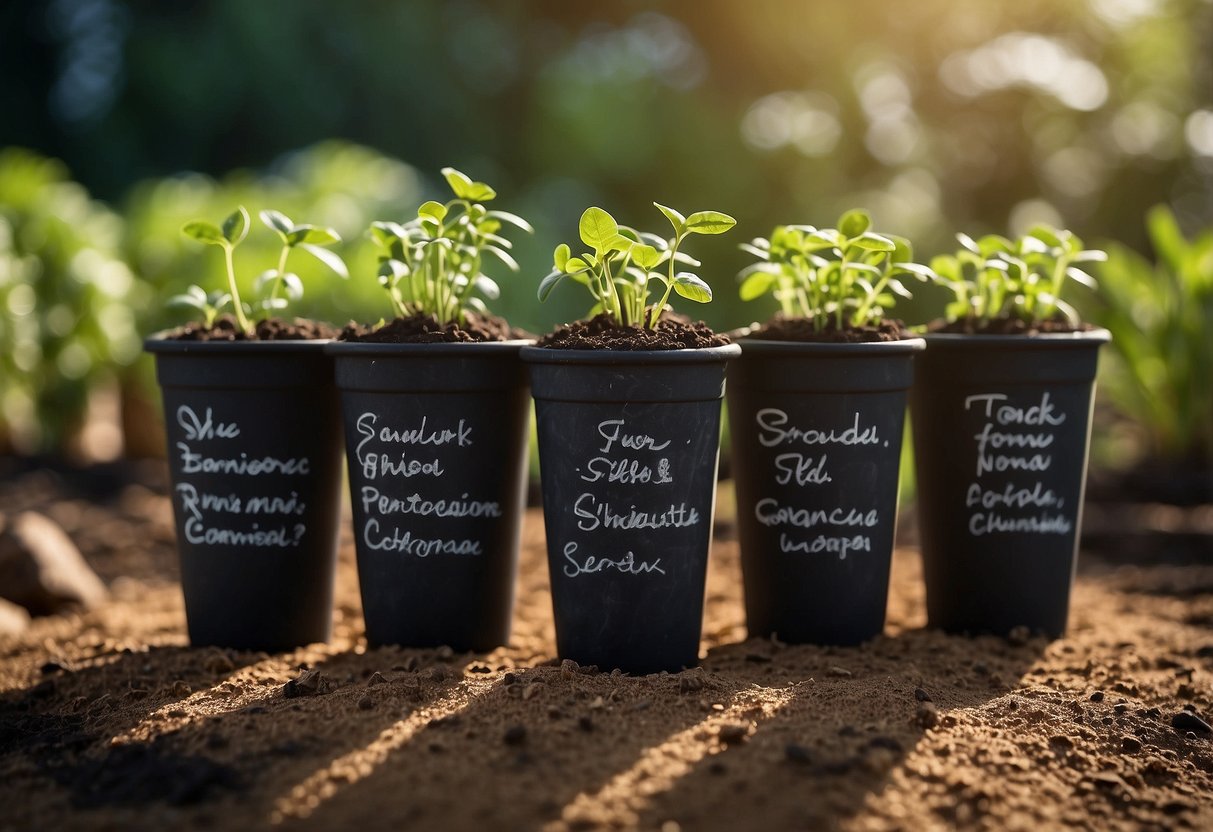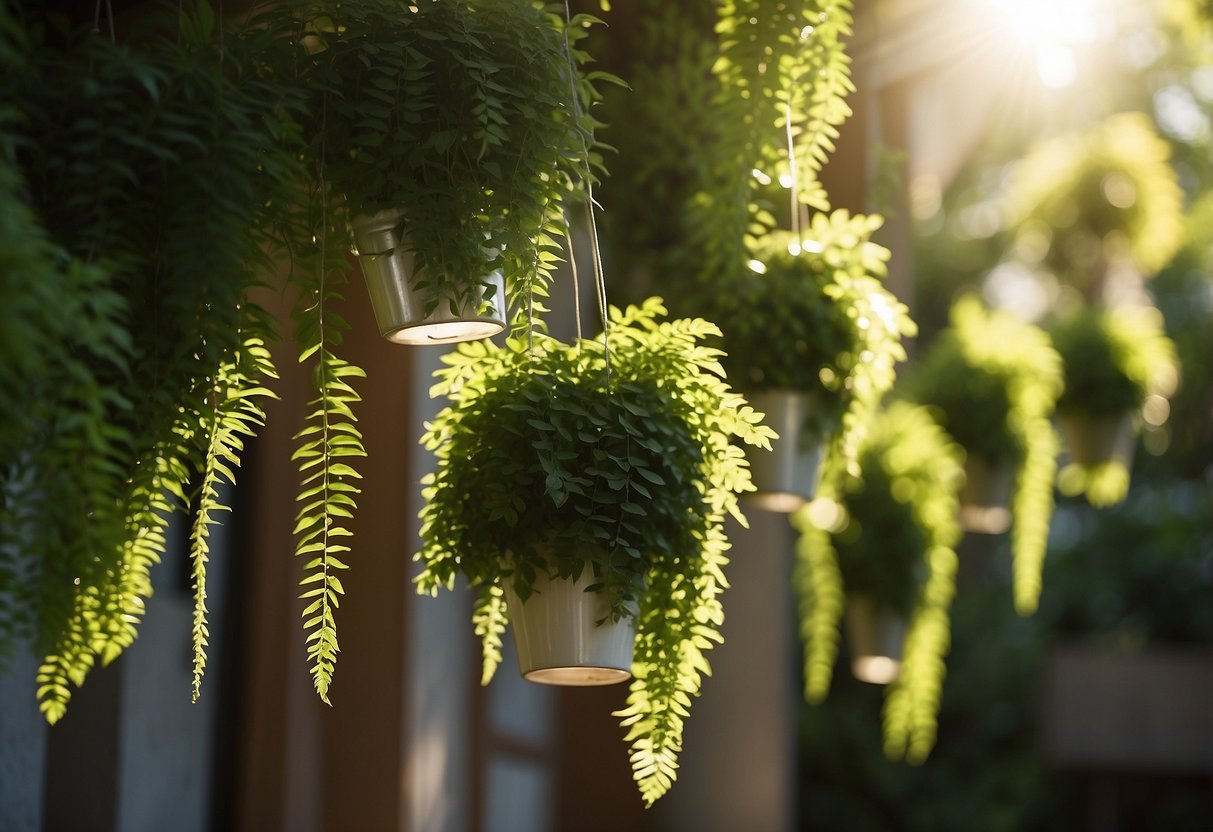Cup Garden Ideas: Creative Ways to Spruce Up Small Spaces
Gardening doesn’t have to take up a lot of space or require a big backyard. One creative way to bring greenery into your home is through cup gardens. These tiny gardens can flourish in teacups, mugs, or any small container, adding a touch of nature to your indoor spaces.

You might wonder why cup gardens are so appealing. They offer a simple and charming way to enjoy plants in even the smallest living spaces. Whether you’re an experienced gardener or just getting started, cup gardens are an enjoyable and low-maintenance project that brings beauty and tranquility into your life.
1) Succulent Cup Display

A succulent cup display is a delightful way to showcase your favorite small plants. You can use various teacups to create a charming arrangement that fits any space.
Choose cups in different sizes and patterns for added visual interest. Place a different type of succulent in each cup to highlight their unique beauty.
This display looks beautiful on windowsills, sunny shelves, or outdoor tables. Minimal watering is needed, making it easy to care for. Experiment with old and new cups to create a style that’s truly yours.
2) Teacup Herb Garden

A teacup herb garden can be a charming and useful addition to your home. Use old or mismatched teacups to plant herbs like basil, thyme, and parsley. These herbs will not only add greenery but also provide fresh ingredients for your cooking.
To start, drill a small hole in the bottom of each teacup for drainage. Fill the cups with good quality potting soil. Place them on windowsills or in other sunny spots.
If you need ideas, this teacup herb garden guide can help you get started. Your kitchen will look and smell wonderful!
3) Vintage Mug Planter

Using vintage mugs as planters adds charm to your space. You can find these mugs at thrift stores or in your own kitchen.
Place tiny rocks or sand at the bottom of the mug to help with drainage. This keeps your plants healthy and prevents overwatering.
Old enamel mugs are a great choice for a vintage look. Their rustic finish adds character to any windowsill or garden.
4) Candle Holder Garden

Transform your garden cups into charming candle holders. By using old cups and mugs, you can create unique holders that add a warm glow to your garden in the evening.
Consider suspending candles in glass orbs from tree branches for a magical look.
Or, try making minimalist concrete candle holders that fit multiple candles on the same plate, creating a cozy, welcoming space.
5) Tea Tin Flowerpot

Using tea tins as flowerpots is a charming idea. You can repurpose old tea tins to grow small plants or herbs.
First, make sure to clean the tins thoroughly. Punch a few drainage holes in the bottom to prevent water from sitting in the tin.
Next, fill the tin with soil and plant your favorite small flowers or herbs. These small planters add a vintage touch to any space and are perfect for window sills, desks, or countertops.
6) Espresso Cup Terrarium

You can create a tiny garden in an espresso cup. Start by cleaning the cup thoroughly. Add a layer of small pebbles for drainage.
Fill the cup with succulent soil. Arrange tiny plants like air plants or small succulents. They need little water and care.
Place your mini terrarium in a spot with indirect sunlight. Water sparingly to keep your plants happy.
7) Mason Jar Flower Arrangement

Mason jars are a great way to display flowers in a simple and pretty way. First, grab a few mason jars. You can use clear ones or paint them for a pop of color.
Next, choose your flowers. You can use hydrangeas, roses, or even sunflowers. Fill the jars with water and arrange your flowers inside.
For an extra touch, try adding some greenery or floating candles. This will create a lovely and welcoming ambiance. Place the jars on your kitchen counter, bedside table, or even as a centerpiece for your dining table.
For more inspiration, visit DIY Mason Jar Flower Arrangements.
8) Wine Glass Succulent

Wine glass succulents are a fun and stylish way to display your plants. They make great centerpieces and add a touch of greenery to any room.
Start by filling a wine glass with a commercial cactus or loamy soil mix. Place your succulent inside and add some pebbles on top.
You can find more ideas at Balcony Garden Web.
9) Chalkboard Label Cups

Chalkboard label cups are a fun and creative way to keep your garden organized. You can easily write the names of your plants on the cups with chalk and erase them when needed.
To make these, apply chalkboard paint to any old cups you have. Once dry, use chalk to label them. It’s that simple and reusable!
10) Yogurt Cup Seedlings

Starting seedlings in yogurt cups is a fun and eco-friendly way to repurpose those containers. After enjoying your yogurt, give the cup a good wash.
Next, make drainage holes in the bottom. You can use a heated nail or a small screwdriver for this. Be careful and ask an adult if you need help.
Fill the cup with soil and add your seeds. Water gently and place in a sunny spot. When the seedlings are ready, transplant them to the garden. For more tips, visit Simple Joy.
This method helps reduce waste while growing your plants.
Benefits Of Cup Gardens

Cup gardens provide a unique way to grow plants that fit perfectly into small spaces, offer great versatility, and promote eco-friendly practices. They can bring life and color to any setting while being remarkably easy to maintain.
Space Saving
One of the best things about cup gardens is that they save space. If you don’t have a garden or much room at home, you can still enjoy gardening. You can place them on window sills, shelves, or even your work desk. Their small size makes them perfect for apartments or offices.
Having a cup garden means you don’t need a big yard to grow plants. You can have a mini garden right in your room. This is a great way to bring nature indoors without taking up too much space.
Versatility
Cup gardens are incredibly versatile. You can plant a variety of plants such as herbs, succulents, or small flowers. This allows you to mix and match depending on your preferences and the conditions in your home.
Another great thing is that you can use different types of containers. You can choose classic tea cups, decorative mugs, or any other small container. This allows you to express your personal style and creativity in your gardening.
Eco-Friendly
Creating a cup garden is also eco-friendly. It encourages the use of recycled materials like old tea cups or mugs that might otherwise be discarded. By repurposing these containers, you help reduce waste and promote sustainability.
Moreover, cup gardens often require less water than traditional gardens. Since they are small, you only need a little water to keep your plants healthy. This helps conserve water and makes maintaining your garden easier.
By choosing to create a cup garden, you are taking a small but meaningful step towards a more sustainable lifestyle.
How To Start Your Own Cup Garden

Starting a cup garden is a fun and simple way to add greenery to small spaces. You need to choose the right cups, select the proper soil and plants, and know how to water them correctly.
Choosing The Right Cups
First, pick cups that fit your style and space. Porcelain or ceramic teacups work well because they hold water and look pretty. You can also use coffee cups or mugs. Make sure the cups are clean and have no cracks.
For drainage, add small holes at the bottom. If drilling isn’t an option, add a layer of pebbles or small rocks at the bottom. This helps the roots stay healthy by preventing water from pooling.
Soil And Plant Selection
Use good quality potting soil for your cup garden. Avoid using garden soil, as it’s too heavy and may not drain well. Fill the cups about three-quarters full with the potting soil. Choose dwarf or small plants that fit in the limited space of a cup.
Succulents and herbs are great choices. Succulents need less water and are easy to care for. Herbs like basil, mint, and thyme grow well in small containers and can be used in cooking.
Proper Watering Techniques
Watering your cup garden correctly is key to keeping the plants healthy. Since cups are small, avoid overwatering. Overwatering can lead to root rot. Instead, water lightly when the soil feels dry to the touch.
Check the soil moisture every few days. Use a spray bottle for a gentle watering method. Ensure excess water drains out through the holes or the pebble layer to prevent water-logging.
Keep an eye out for any signs of wilting or yellowing, which can indicate too much or too little water.
Starting a cup garden is an easy and rewarding project that brings a touch of nature into your home. Happy gardening!
Creative Ideas For Cup Gardens

Creating a cup garden is a fun and charming way to bring some greenery into your space. By focusing on seasonal themes, miniature fairy gardens, and herb gardens, you can create delightful small-scale gardens that suit different preferences and needs.
Seasonal Themes
Seasonal themes allow you to refresh your cup gardens throughout the year. For spring, you might plant colorful tulips or daffodils in vibrant pastel teacups. Summer can feature bright flowers like marigolds or petunias in cups with sunny, bold patterns.
In autumn, consider using mini pumpkins or gourds surrounded by small, hardy blooms like mums. Winter gardens can include festive touches like tiny evergreen trees or poinsettias in red and green cups. Adding small accents, such as miniature ornaments for winter or tiny scarecrows for fall, completes the look.
Miniature Fairy Gardens
Miniature fairy gardens turn ordinary teacups into magical scenes. Start by filling a large teacup with soil and adding small plants like moss, ferns, or succulents. These plants are easy to maintain and perfect for creating a lush, fairy-sized landscape.
Include tiny fairy figurines, miniature houses, or tiny garden tools to enhance the whimsical feel. You can use small pebbles to create pathways and add little accessories like benches or tiny animals. These elements make your garden look like a fairy tale and are sure to be a conversation starter.
Herb Gardens
Herb gardens in teacups are both practical and aesthetically pleasing. Popular herbs like basil, thyme, and mint thrive in small containers. You can place these teacup herb gardens on your kitchen windowsill for easy access while cooking.
Make sure to use teacups with good drainage. If your cups don’t have holes, place a layer of small rocks at the bottom before adding soil. This helps prevent root rot. Label each teacup with the herb’s name using small tags or paint for a personalized touch.
By incorporating these creative ideas for cup gardens, you’ll enjoy a charming and personalized touch of nature in your home or garden.







